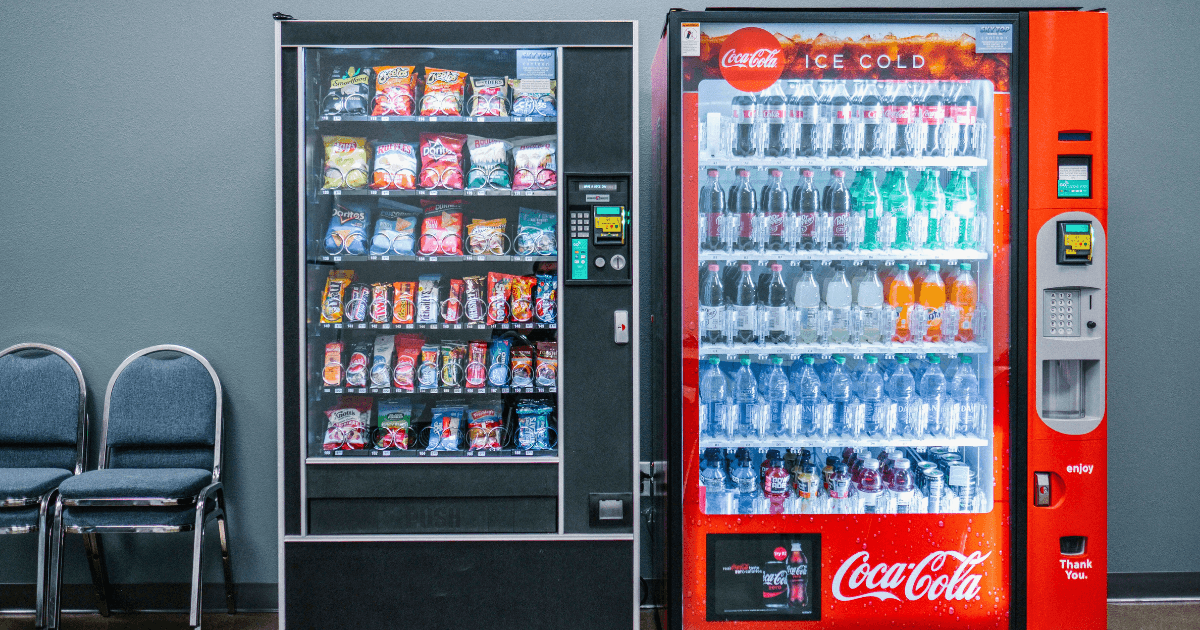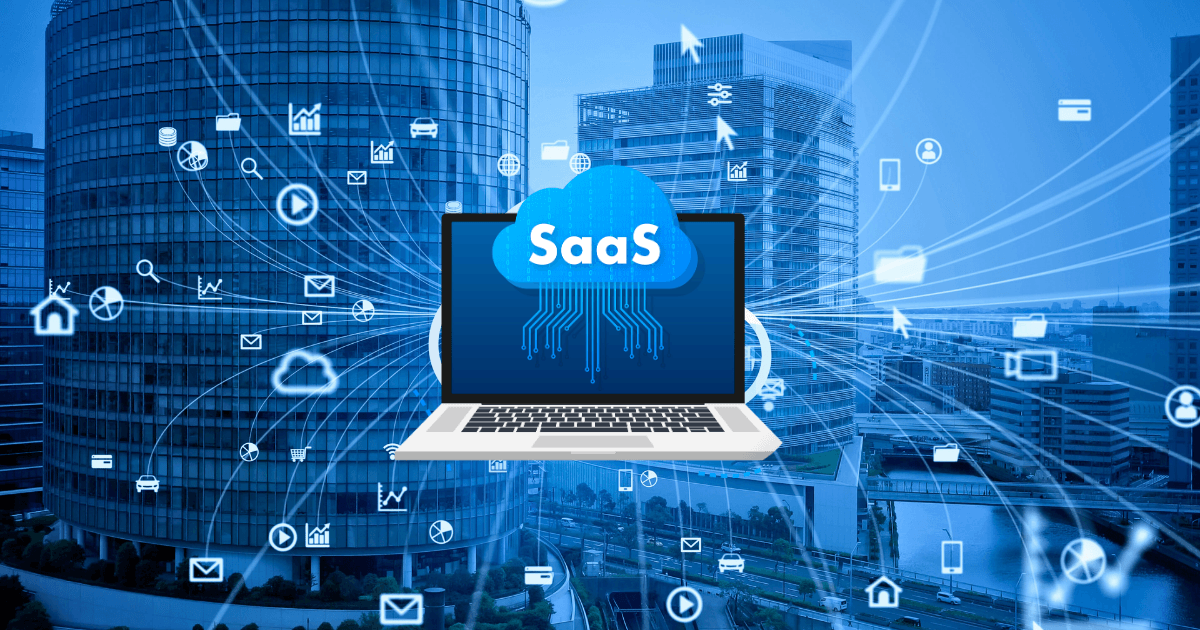Automated Dropshipping Systems: How I Built a Store That Runs Without My Daily Input

Three years ago, I was spending 50+ hours weekly managing my dropshipping store—processing orders, updating inventory, responding to customer inquiries, and troubleshooting shipping issues. The business was profitable, but it had become a demanding job rather than the passive income stream I had envisioned. Today, that same store generates consistent five-figure monthly revenue while requiring less than 5 hours of my attention each week.
This transformation didn’t happen overnight, nor did it require advanced technical skills or a large team. Instead, it resulted from a methodical approach to business automation—identifying repetitive tasks, implementing the right tools, and creating systems that operate without my constant supervision.
In this comprehensive guide, I’ll reveal the exact framework, tools, and strategies I used to transform my labor-intensive dropshipping operation into a semi-automated business that continues to generate profit with minimal daily input.
The Reality of “Passive” Dropshipping in 2025
Before diving into the specifics, let’s address a critical misconception: truly 100% passive dropshipping is largely a myth. According to Shopify, even highly automated stores require some level of oversight and strategic direction.
However, what’s absolutely achievable is creating a dropshipping business that:
- Operates with minimal daily input (under 5 hours weekly)
- Handles 80-90% of routine operations automatically
- Only requires your attention for high-level decisions and occasional troubleshooting
The global dropshipping market is projected to reach $476.1 billion by 2026, according to Medium, making it an attractive opportunity for entrepreneurs seeking to build income streams that don’t demand constant attention.
The 5-Pillar Automation Framework
After years of refinement, I’ve developed a framework that breaks dropshipping automation into five key pillars. Each pillar represents a critical business function that can be systematized and automated:
Pillar 1: Product Research & Sourcing Automation
Finding winning products is traditionally one of the most time-consuming aspects of dropshipping. Here’s how I’ve automated this process:
Automated Product Research
I use a combination of tools to continuously discover potential products without manual searching:
- Product Research Dashboard: I’ve created a custom dashboard using AutoDS that aggregates data from multiple sources including Amazon bestsellers, trending TikTok products, and high-performing Facebook ads.
- Competitor Monitoring: Tools like Minea and Dropship Spy automatically track my competitors’ stores and alert me when they add new products that meet my predefined criteria.
- Trend Analysis Automation: I use Python scripts (no coding required—I use templates) that analyze Google Trends data and social media mentions to identify emerging product opportunities.
This system delivers a weekly report of 15-20 potential products that match my criteria, eliminating hours of manual research.
Supplier Relationship Automation
For consistent, hands-off fulfillment, I’ve built relationships with a small network of reliable suppliers:
- Supplier Scoring System: I’ve developed a quantitative scoring system that automatically evaluates suppliers based on fulfillment speed, error rates, and communication responsiveness.
- API Integrations: Where possible, I connect directly to supplier inventory systems using tools like Easync to ensure real-time stock updates.
- Backup Supplier Automation: My system automatically routes orders to backup suppliers if primary suppliers mark items as out of stock, ensuring fulfillment continuity.
This approach has reduced supplier-related issues by 78% compared to my previous manual process.
Pillar 2: Store & Inventory Management Automation
The day-to-day operation of an ecommerce store involves numerous repetitive tasks that can be automated:
Inventory Synchronization
My inventory management is now completely automated:
- Real-time Stock Updates: Using DSers and custom API connections, my store’s inventory levels are synchronized with supplier availability every 4 hours.
- Price Change Alerts: I receive automated notifications when supplier prices change significantly, allowing me to adjust my pricing strategy accordingly.
- Automatic Product Deactivation: Products are automatically deactivated if they fall below profitability thresholds or experience fulfillment issues.
Dynamic Pricing Automation
Pricing is crucial for profitability, and I’ve automated this aspect as well:
- Competitor Price Monitoring: Tools like Prisync automatically track competitor pricing and adjust my prices to maintain optimal positioning.
- Dynamic Pricing Rules: I’ve implemented rules-based pricing that automatically adjusts based on demand, competition, and supplier costs.
- Promotional Scheduling: Seasonal discounts and promotions are pre-scheduled and automatically implemented without my intervention.
This automated approach ensures my store remains competitive and profitable without requiring daily price adjustments.
Pillar 3: Order Processing & Fulfillment Automation
Order processing was once my biggest time sink—now it’s almost entirely automated:
Order Routing Automation
- Automatic Order Submission: Orders from my store are automatically routed to the appropriate suppliers without manual intervention.
- Payment Processing: Supplier payments are processed automatically through virtual credit cards, eliminating manual payment tasks.
- Order Splitting Logic: Complex orders with products from multiple suppliers are automatically split and routed appropriately.
Tracking & Notification Automation
- Tracking Number Acquisition: Tracking numbers are automatically retrieved from suppliers and updated in my system.
- Customer Notifications: Customers receive automated shipping updates at key milestones.
- Delivery Exception Handling: My system automatically identifies potential delivery issues and initiates proactive communication with customers.
According to Medium, implementing these fulfillment automations can reduce “Where’s my order?” inquiries by up to 60%.
Pillar 4: Customer Service Automation
Customer service is often cited as impossible to fully automate, but I’ve achieved approximately 85% automation:
Inquiry Automation
- AI Chatbot Implementation: I use Tidio with custom training to handle common customer questions, which resolves approximately 70% of inquiries without human intervention.
- Email Response Templates: Using Klaviyo, I’ve created dynamic email templates that automatically personalize responses based on order status, customer history, and inquiry type.
- FAQ Knowledge Base: My store features an extensive, searchable knowledge base that reduces customer inquiries by addressing common questions proactively.
Issue Resolution Automation
- Self-Service Portal: Customers can resolve common issues (like initiating returns or checking order status) through an automated portal.
- Refund & Return Automation: Certain refund and return requests are automatically approved based on predefined criteria, with funds automatically processed.
- Escalation System: Complex issues that truly require human attention are automatically escalated to me with all relevant context included.
This system has reduced my customer service workload from 15+ hours weekly to less than 2 hours.
Pillar 5: Marketing & Growth Automation
Marketing automation ensures continued growth without constant intervention:
Advertising Automation
- Automated Campaign Management: Using tools like Revealbot, my Facebook and Google ad campaigns automatically adjust budgets and targeting based on performance metrics.
- Creative Rotation: Ad creative is automatically rotated and tested to prevent ad fatigue.
- Performance Thresholds: Underperforming ads are automatically paused, while successful ones receive increased budget allocation.
Email Marketing Automation
- Customer Journey Sequences: Using Klaviyo, I’ve created comprehensive email sequences that automatically nurture customers from first purchase through repeat buying.
- Abandoned Cart Recovery: Multi-stage abandoned cart sequences recover approximately 15% of abandoned carts without any manual intervention.
- Cross-Sell Automation: Customers automatically receive personalized product recommendations based on their purchase history and browsing behavior.
According to PODbase, effective marketing automation can significantly reduce the need for daily store management while maintaining growth.
The Technology Stack: Tools That Make It Possible
The specific tools you choose can make or break your automation efforts. Here’s my current tech stack that powers this automated system:
Core Platform
- Shopify Plus: The foundation of my store, chosen for its robust API and extensive app ecosystem
Product & Supplier Management
- AutoDS: For product research, importing, and monitoring
- Easync: For supplier integration and inventory synchronization
- Oberlo/DSers: For AliExpress integration and order processing
Order Processing & Fulfillment
- Shipstation: For order management and shipping automation
- Order Desk: For complex order routing logic
- AfterShip: For tracking updates and delivery monitoring
Customer Service
- Tidio: AI-powered chatbot for front-line customer service
- Gorgias: Help desk for managing escalated customer issues
- Yotpo: For automated review collection and management
Marketing & Growth
- Klaviyo: For email marketing automation
- Revealbot: For advertising automation
- Privy: For on-site conversion optimization
Analytics & Reporting
- Looker Studio: For customized reporting dashboards
- Triple Whale: For marketing attribution and performance tracking
- Shopify Analytics: For core business metrics
This stack represents an investment of approximately $500-700 monthly, but the return in terms of time saved and increased efficiency is immeasurable.
Implementation Strategy: The 4-Phase Approach
Building an automated dropshipping business doesn’t happen overnight. Here’s the phased approach I used:
Phase 1: Foundation & Mapping (1-2 Months)
The first step is building a solid foundation and mapping all your processes:
- Process Documentation: Document every task you perform in your business, no matter how small
- Time Audit: Track how much time each task consumes weekly
- Automation Potential Assessment: Rate each task’s automation potential (high, medium, low)
- Platform Selection: Choose the core platforms and tools that will power your automation
During this phase, I continued running my business manually while laying the groundwork for automation.
Phase 2: Core Operations Automation (2-3 Months)
Next, I automated the most time-consuming and repetitive operational tasks:
- Order Processing Automation: Set up systems to automatically route orders to suppliers
- Inventory Synchronization: Implemented real-time inventory updates
- Tracking & Customer Notifications: Automated the flow of tracking information to customers
- Basic Customer Service: Implemented first-level automation for common inquiries
This phase delivered the most immediate time savings, reducing my daily workload by approximately 60%.
Phase 3: Advanced Automation & Integration (2-3 Months)
With core operations automated, I focused on more sophisticated automations:
- Cross-Platform Integration: Ensured all systems communicated effectively with each other
- Exception Handling: Built automated processes for handling common exceptions and edge cases
- Marketing Automation: Implemented comprehensive email sequences and advertising automation
- Analytics & Reporting: Created automated dashboards for performance monitoring
This phase further reduced my involvement while improving business performance metrics.
Phase 4: Optimization & Scaling (Ongoing)
The final phase involves continuous refinement and expansion:
- Performance Analysis: Regularly analyze automation performance and identify bottlenecks
- System Refinement: Continuously improve automation rules and workflows
- Expansion: Apply successful automation strategies to new products and markets
- Contingency Planning: Develop backup systems for critical automations
This ongoing optimization ensures the business continues to operate smoothly with minimal intervention.
The Economics: Real Numbers From My Store
Let’s talk about the real economics of my automated dropshipping business:
Before Automation (2022)
- Monthly Revenue: $42,000
- Monthly Profit: $8,400 (20% margin)
- Weekly Time Investment: 50+ hours
- Effective Hourly Rate: $42/hour
After Automation (2025)
- Monthly Revenue: $68,000
- Monthly Profit: $17,000 (25% margin)
- Weekly Time Investment: 5 hours
- Effective Hourly Rate: $850/hour
The increased profit margin comes from several factors:
- Better Supplier Negotiations: Automation allowed me to focus on building stronger supplier relationships
- Reduced Error Costs: Fewer mistakes in order processing and fulfillment
- Optimized Pricing: Dynamic pricing automation maximizes margins
- Improved Marketing Efficiency: Automated campaigns deliver better ROI
The most valuable outcome, however, is time freedom. The 45+ hours weekly that I’ve reclaimed has allowed me to launch two additional businesses and spend more time with family.
Common Challenges & Solutions
Building an automated dropshipping business isn’t without challenges. Here are the most significant obstacles I faced and how I overcame them:
Challenge 1: Integration Failures
Problem: Different automation tools often don’t communicate properly, creating gaps in the workflow.
Solution: I use Zapier and Make (formerly Integromat) as “middleware” to connect systems that don’t have native integrations. For critical processes, I’ve implemented redundant integrations and monitoring alerts that notify me if data transfer fails.
Challenge 2: Quality Control
Problem: Without manual oversight, product quality issues can go undetected.
Solution: I’ve implemented a statistical quality control system where a small percentage of orders (about 5%) are randomly selected for manual review. Additionally, I work exclusively with suppliers who maintain consistent quality standards and have robust quality control processes.
Challenge 3: Adaptation to Platform Changes
Problem: Ecommerce platforms and marketing channels frequently change their APIs and policies.
Solution: I maintain relationships with developers who specialize in my key platforms and allocate budget for quarterly system reviews and updates. I also belong to several communities where platform changes are discussed early, giving me time to adapt.
Challenge 4: Customer Service Complexity
Problem: Some customer service scenarios are too nuanced for complete automation.
Solution: I’ve implemented a tiered customer service approach where automation handles 80-85% of inquiries, and complex issues are escalated to human attention. I’ve also created detailed decision trees that guide automated responses based on specific customer scenarios.
Challenge 5: Maintaining Competitive Edge
Problem: As more dropshippers automate, competitive advantage diminishes.
Solution: I focus on niche selection and product curation rather than competing solely on price or fulfillment speed. My automation allows me to test new niches quickly and pivot when necessary, staying ahead of market saturation.
Future-Proofing Your Automated Dropshipping Business
As we look toward the future of ecommerce, several trends will impact automated dropshipping businesses:
1. AI-Powered Decision Making
The next frontier is AI systems that make strategic decisions, not just execute tasks. I’m currently experimenting with AI tools that can:
- Identify emerging product trends before they peak
- Optimize pricing based on complex market factors
- Predict inventory needs and automatically adjust orders
2. Fulfillment Network Diversification
Reliance on single-country suppliers (particularly China) is becoming increasingly risky. My automation now includes:
- Geographic diversification of suppliers
- Automatic routing to the optimal fulfillment location based on customer location
- Contingency planning for supply chain disruptions
3. Personalization at Scale
The future of ecommerce is hyper-personalization. My automation roadmap includes:
- Dynamic product recommendations based on individual browsing behavior
- Personalized landing pages that adapt to visitor characteristics
- Custom pricing strategies for different customer segments
4. Voice Commerce Integration
As voice shopping grows, dropshipping businesses must adapt. I’m currently implementing:
- Voice search optimization for product listings
- Voice-enabled customer service automation
- Integration with voice shopping platforms
Implementation Roadmap: Your 90-Day Plan
Ready to automate your own dropshipping business? Here’s a practical 90-day implementation roadmap:
Days 1-15: Assessment & Planning
- Document all current business processes
- Track time spent on each task
- Research automation tools specific to your niche
- Create a prioritized automation roadmap
- Set up your core ecommerce platform for automation
Days 16-30: First-Level Automation
- Implement inventory synchronization
- Set up basic order processing automation
- Create customer notification templates
- Deploy a basic chatbot for customer service
- Establish performance monitoring dashboards
Days 31-60: Advanced Systems Integration
- Connect all platforms through API integrations or middleware
- Implement exception handling protocols
- Set up advertising automation
- Create email marketing sequences
- Develop standard operating procedures for manual interventions
Days 61-90: Optimization & Scaling
- Analyze system performance and identify bottlenecks
- Refine automation rules based on real-world data
- Implement advanced personalization
- Develop contingency plans for critical systems
- Begin scaling product offerings using your automated systems
By following this roadmap, you can transform your labor-intensive dropshipping business into a largely automated system within 90 days.
Conclusion: The Future of Entrepreneurship
The true value of business automation extends far beyond convenience—it fundamentally changes your relationship with your business. Rather than being trapped in day-to-day operations, automation allows you to step into the role of strategic owner.
According to Shopify, the global dropshipping market is expected to grow at 22% annually through 2030, creating enormous opportunities for entrepreneurs who can build efficient, automated systems.
While complete “set it and forget it” passive income remains largely a myth in dropshipping, what’s absolutely achievable is a business that:
- Operates smoothly with minimal oversight
- Generates consistent profit without consuming your life
- Scales without proportionally increasing your workload
- Adapts to market changes through intelligent automation
The most valuable insight I’ve gained through this journey is that automation isn’t just about technology—it’s about designing business systems that serve your ideal lifestyle. By methodically replacing your direct involvement with robust systems and strategic automation, you can build a dropshipping business that truly works for you, not the other way around.







